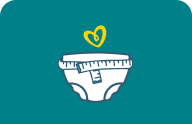Nuchal Translucency Scan: Results & What to Expect
If you’ve just heard about the nuchal translucency scan, you might be wondering what it is and whether you need it. This first-trimester screening uses an ultrasound to measure fluid at the back of your little one’s neck, helping assess the chances of certain conditions like Down syndrome.
Here’s a quick look at what you need to know:
What does a nuchal translucency test for? It estimates the likelihood of chromosomal conditions, including trisomy 21 (Down syndrome) and trisomy 18.
When is the nuchal scan done? It’s performed between 11 and 13 weeks of pregnancy when the measurement is most accurate.
What is the normal range for a translucency ultrasound? A measurement under 3.0 mm is generally considered low risk, but results are always reviewed with other factors.
Is the NT scan required? No, it’s optional. If results suggest a higher chance of a condition, your healthcare provider may offer further testing for a clearer picture.
Understanding your baby’s development may feel overwhelming, but this screening is just one of many ways to learn more. Read on to find out what it tests for, when it’s done, and what your results may mean.
What Is Nuchal Translucency Ultrasound Test in Pregnancy?
A nuchal translucency ultrasound is a first-trimester screening that helps check for certain medical conditions in early pregnancy. It’s a simple scan that measures the fluid at the back of your little one’s neck (nuchal fold), known as the nuchal translucency scan. This test is often paired with a blood test, and together, they’re sometimes called the “combined first-trimester screening.”
Keep in mind that these and other prenatal screening tests may indicate the likelihood or chances of a baby having a certain condition, but they cannot diagnose any condition.
Although your healthcare provider will likely recommend tests like the nuchal translucency screening as a regular part of your prenatal care, it’s your decision whether you want to go ahead with them or not—they’re completely optional.
What Is Nuchal Fold?
You're not alone if you’re wondering, “What a nuchal fold is?” The nuchal fold is a small area of tissue at the back of your little one’s neck. A nuchal translucency test measures its thickness as part of a first-trimester screening. A thicker measurement doesn’t diagnose a condition but may indicate a higher chance of certain chromosomal differences, prompting further testing.
What is the Nuchal Translucency Ultrasound Test For?
A nuchal translucency screening helps assess the chances of certain chromosomal conditions, including Down syndrome (trisomy 21) and trisomy 18. During the scan, a healthcare provider measures the fluid at the back of your baby’s neck. If the measurement is larger than expected, it may suggest a higher likelihood of a genetic condition.
While this screening can estimate risk, it doesn’t provide a diagnosis. If results suggest a higher chance of a condition, your healthcare provider may recommend further diagnostic tests, such as chorionic villus sampling (CVS) or amniocentesis, for a clearer answer.
It’s also good to keep in mind that prenatal screenings aren’t always 100% accurate—false positives and false negatives may happen. If you’re unsure about testing, talking with your healthcare provider can help you decide what’s best for you.
When Is a Nuchal Scan Done?
A nuchal translucency ultrasound is typically done in the first trimester, between 10 and 14 weeks of pregnancy. This timing is important because the fluid behind the baby’s neck starts to be reabsorbed after 14 weeks, making it harder to measure.
Can A Baby Have Down Syndrome if Nuchal Translucency is High?
A high nuchal translucency measurement may suggest a higher chance of Down syndrome or another condition, but it’s not a diagnosis. This result simply means that further testing might be helpful for more clarity. It’s also possible for babies with a higher measurement to be born with no identified conditions—every pregnancy and baby is unique.
If your little one’s measurement is higher than expected, your healthcare provider can walk you through the next steps and may offer support as you decide whether additional testing feels right for you.
How Much Can a Nuchal Translucency Scan Cost?
The cost of an NT scan may vary depending on your location, healthcare provider, and insurance coverage. In some cases, it may be covered by insurance as part of routine prenatal care, while in others, there may be an out-of-pocket nuchal translucency scan price. If you're unsure about the cost, check with your healthcare provider or insurance provider to understand what’s covered and any potential expenses.
Nuchal Translucency Test Results, Ranges and Measurements
As mentioned earlier, during a nuchal translucency test, your healthcare provider measures the fluid at the back of your little one’s neck. The nuchal translucency measurement naturally increases as your baby grows, so results are always considered alongside gestational age.
Different healthcare organizations may have slightly different cutoffs for recommending additional testing, based on both the nuchal translucency results and your little one’s age. It’s important to remember that this screening only helps to assess the likelihood of certain conditions. If your results raise any questions, your healthcare provider may help you decide if further testing is right for you.
What is the Normal Range for a Translucency Ultrasound?
A normal nuchal translucency measurement suggests a low risk for certain conditions like Down syndrome. Since the NT measurement increases with gestational age, providers compare results to other babies at the same stage.
In most cases, a nuchal translucency measurement that’s up to 3.0 millimeters at 11 to 13 weeks. Measurements within this nuchal translucency normal range mean further testing isn’t usually needed. However, it depends on the clinic testing. Feel free to ask your healthcare provider questions.
What May be Considered Abnormal Range Results for a Translucency Test?
An abnormal nuchal translucency ultrasound may show an increased measurement, meaning the fluid measured is higher than expected. This could indicate a higher chance of certain chromosomal conditions, like Down syndrome or trisomy 18, but it doesn’t necessarily mean there’s a problem. A baby with an increased measurement doesn’t always mean there’s a problem—many babies with higher measurements are born without any health issues.
What Is an Integrated Screening?
An integrated screening combines results from first-trimester screenings, like the nuchal translucency test and a blood test, with a second-trimester screening to give a clearer picture of your little one’s development.
The second-trimester test, called the quad screen (or quadruple screening), checks for certain hormones—alpha-fetoprotein, estriol, hCG, and inhibin A. These combined results help estimate the chances of conditions like spina bifida or Down syndrome.
If the results suggest a higher chance of a condition, your healthcare provider might recommend a diagnostic test for a clearer answer. This could be chorionic villus sampling (CVS) in the first trimester or amniocentesis in the second trimester.
These tests check either placental tissue or amniotic fluid to confirm or rule out certain conditions. If your provider suggests one, they’ll walk you through what it involves so you can decide what feels right for you.
The Bottom Line
Prenatal screenings, like the nuchal translucency scan, can offer reassurance and insight into your baby’s development. If you’re unsure whether a test is right for you, your healthcare provider can help you decide.
Stay on top of your pregnancy journey with our pregnancy calendar, and don’t forget to earn rewards on diapers and wipes with the Pampers Rewards App!
How We Wrote This Article The information in this article is based on expert advice found in trusted medical and government sources, such as the American Academy of Pediatrics and the American College of Obstetricians and Gynecologists. You can find a full list of sources used for this article below. The content on this page should not replace professional medical advice. Always consult medical professionals for full diagnosis and treatment.
Join a World of Support
through Pregnancy and Parenthood.
TRACK WITH TOOLS
LEARN WITH EXPERTS
GET REWARDED













